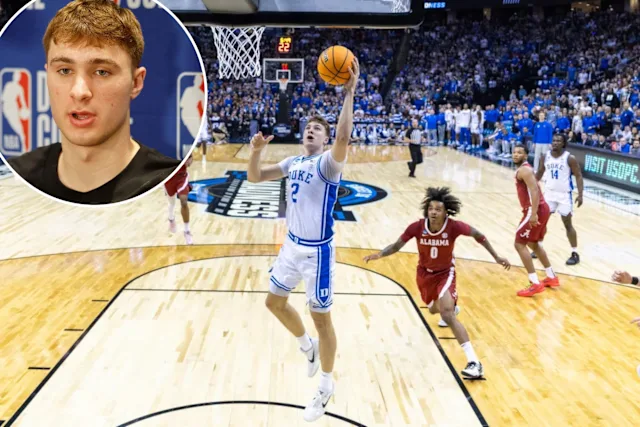Duke Basketball Phenom Cooper Flagg’s $28 Million NIL Earnings Surpass NBA Rookie Salaries, Redefining College Athlete Marketability
Cooper Flagg, an 18-year-old basketball prodigy from Newport, Maine, has become a household name in the sports world, not only for his exceptional skills on the court but also for his groundbreaking earnings off it. In a remarkable turn of events, Flagg’s Name, Image, and Likeness (NIL) earnings during his freshman year at Duke University have surpassed those of many NBA rookies, signaling a new era in college athletics.
Flagg’s NIL journey began in August 2024 when he signed a five-year endorsement deal with New Balance. The first year of this contract was structured as an NIL agreement, with the subsequent four years transitioning into a traditional endorsement deal. While the exact financial terms of the New Balance deal have not been publicly disclosed, industry experts estimate its value to be between $2 million and $8 million per year, based on comparable contracts in the sports marketing industry .
In addition to his partnership with New Balance, Flagg secured a $15 million deal with Fanatics, a leading sports merchandise retailer, in January 2025. This deal included the release of his own Topps Bowman basketball card, further solidifying his status as a marketable athlete .
Flagg also inked a significant deal with Gatorade in October 2024, becoming the first freshman to be named Maine’s Gatorade Player of the Year. This partnership not only highlighted his athletic prowess but also his appeal to major sports brands .
Other notable endorsements include a partnership with Cort Furniture, focusing on college dorm furnishings, and an agreement with The NIL Store, a marketplace for college athletes to sell officially licensed merchandise. These deals, while smaller in comparison, contribute to Flagg’s diverse portfolio of NIL agreements .
Collectively, these endorsements have propelled Flagg’s NIL earnings to an estimated $28 million for the 2024–2025 season, a figure that rivals the salaries of NBA rookies. For context, the projected rookie salary for the No. 1 pick in the 2025 NBA Draft is approximately $11.5 million, with subsequent annual increases .
This unprecedented earning potential has sparked discussions about the evolving landscape of college athletics. The NCAA’s decision to allow athletes to profit from their NIL has opened new avenues for revenue, enabling college athletes like Flagg to capitalize on their personal brand while maintaining eligibility. However, this shift has also raised concerns among coaches and administrators about the impact on team dynamics and the potential for increased pressure on young athletes .
Despite the financial windfall, Flagg has remained focused on his athletic development. His performance on the court has been nothing short of stellar, with averages of 21.2 points, 7.1 rebounds, and 4.4 assists per game. These statistics have not only earned him the National Player of the Year award but also solidified his status as the consensus No. 1 pick in the upcoming NBA Draft .
Looking ahead, Flagg’s future in the NBA appears promising. Should he be selected as the top pick, he is projected to sign a four-year, $62.7 million contract, with annual salaries approaching $16 million. This potential NBA salary, while substantial, pales in comparison to his current NIL earnings, underscoring the financial opportunities available to top college athletes in today’s market .
In conclusion, Cooper Flagg’s meteoric rise in both athletic performance and financial success exemplifies the transformative impact of NIL rights on college sports. His ability to leverage his personal brand has set a new benchmark for future generations of college athletes, highlighting the growing intersection of sports, business, and media. As the landscape of college athletics continues to evolve, Flagg’s story serves as a testament to the untapped potential of student-athletes in the modern era.



